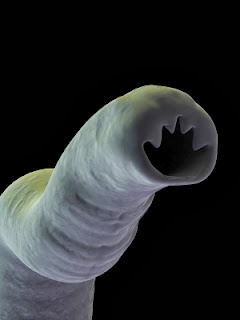Kidney and bladder disorders are
perfect examples of the synergism of Western and Eastern medicine.
The most common acute problem we see
in veterinary medicine is bacterial infection of the kidneys
and/or bladder. Similar to people, we often see dogs with bladder
infections with a bacteria called E. Coli. This infection is
more common in female dogs because their shorter urethra makes it
easier for bacteria to get into the bladder than in male dogs. In
dogs, kidney infections are also sometimes seen due to a bacteria
called Leptospirosis. Acute urinary tract infections are best
treated with conventional Western medicine such as antibiotics, pain
relief medication and increasing fluid intake. If the infection
recurs, or seems resistant to therapy, other tests may need to be
done. These can include urine cultures to identify resistant or
multiple infections, X-ray and/or ultrasound exams to identify
bladder stones or tumors or assessment of the prostate in intact male
dogs for prostatitis (inflammation of the prostate). If any
underlying problems are found, the appropriate medical or surgical
procedures will need to be performed before the urinary tract
infection will resolve.
The most common non-infectious acute
problem is accidental poisoning to due ingestion of human medications
or automobile antifreeze products. Both of these will cause
severe acute kidney failure. Treatment involves hospitalization for
three to five days on high rates of intravenous fluid administration
and medications to protect the kidneys while the toxin is being
eliminated from the body. In rare circumstances, referral to the
veterinary school for dialysis is necessary.
Chronic kidney disease, formally
known as chronic kidney failure, occurs when damage to the kidney
results in an insufficient amount of healthy tissue remaining to
remove waste products of normal metabolism from the blood. As these
waste products build up in the body, animals and people feel
nauseous, lose their appetite, become lethargic and get dehydrated.
The loss of kidney tissue can result from chronic infection,
congenital birth defects, physical damage, toxins as described above
and aging changes, especially in older cats. Conventional treatment
includes long-term fluid administration (including giving fluids
under the skin at home), anti-nausea drugs, medications to control
phosphorus levels and high blood pressure and special “kidney
preserving” diets. These treatments often need to be given for the
remainder of the pet’s life.
In Traditional Chinese Veterinary
Medicine (TCVM), chronic kidney disease can be due to either Kidney
Yin or Kidney Yang Deficiency. Yang is the warming “energy”
of the body, so pets with Yang-Deficient kidney failure are often
cold, have low energy, and since the Kidney System in TCVM controls
the hind end of the body, these pets are often weak in their back
legs. TCVM treatment includes acupuncture points to stimulate Yang,
nourish the Kidneys, strengthen the back end, warm the body and
promote appetite. Warming, Yang-nourishing herbs are used, as is a
warming, Yang-nourishing diet.
Yin is the cooling “substance” of
the body, so pets with Yin-Deficient kidney disease “run too hot”.
Seen more frequently in dogs than in cats, these are the pets that
pant a lot, tend to be up frequently at night needing to urinate, and
often seem agitated and uncomfortable. Treatment includes the same
Western methods as described above, but this time with the addition
of acupuncture and herbs to help cool the body, stimulate Yin,
nourish the Kidneys, and reduce anxiety. A cooling, Yin-nourishing
diet is also used.
Urinary incontinence, most often
seen in older female dogs, results from a weakening of the neck of
the bladder, allowing the outflow “valve” of the bladder to
remain slightly open, especially when at rest. This allows urine to
leak out, and these dogs often wake up with a puddle of urine in
their beds. This is often treated with a drug called Proin quite
successfully. For those dogs which suffer side-effects, or in which
Proin is no longer effective, or for male dogs, acupuncture and herbs
can be very effective at resolving the incontinence. In TCVM, urinary
incontinence is due to Kidney and Bladder Qi Deficiency. Like
Yang, Qi is energy, the force behind bodily processes. When Kidney or
Bladder Qi is deficient, the body lacks the energy to hold the urine
in the bladder. Acupuncture points for Qi stimulation, nourishing the
Kidneys and strengthening the bladder are used. There are also
Traditional Chinese herbs and foods that help strengthen Kidney and
Bladder Qi.
Feline Lower Urinary Tract Disease
(FLUTD) is a chronic inflammation of the bladder in cats
resulting in irritation, pain, urgency to urinate, crystal formation
in the urine, and in males, urethral obstruction. It is similar to
Interstitial Cystits (IC) in people. There is no one specific cause,
and genetics, diet, infection, stress level and lifestyle all seem to
play a role. Western treatments include increasing fluid intake,
special diets, antibiotics only if there is infection present and
medications for bladder pain. Of the five Primary Chinese
Pathogens, an Excess of two, Dampness and Heat, are present in
the bladder with chronic inflammation. There are very specific
acupuncture points for draining Dampness and releasing
Heat, as well as points for strengthening the bladder and
relieving pain. Traditional Chinese herbs are also used. A cooling
diet is fed to help further release Heat, and Damp foods are avoided.
Many of these conditions are never
going to be completely cured as a simple acute urinary tract
infection may be. For these chronic conditions, incorporating both
conventional and Chinese Medicine into the treatment plan can provide
relief of symptoms, increased comfort and an improved quality of life
for many years.






